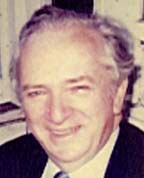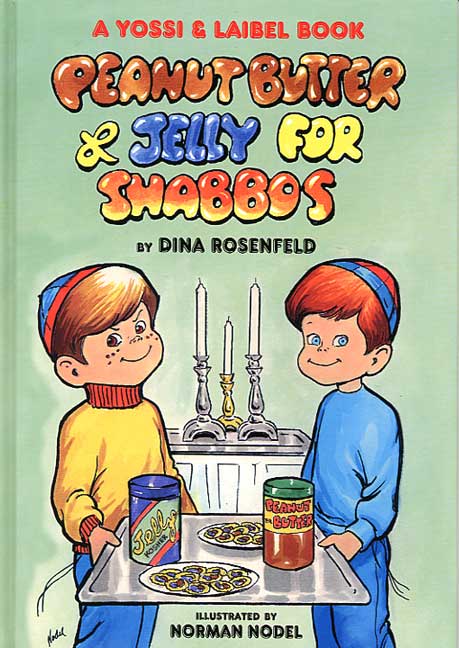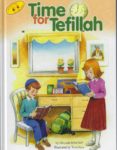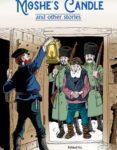Overview
One Friday afternoon, Yossi and Laibel are confronted with a seemingly impossible task. With the right attitude and a little ingenuity, the two brothers find out that they can try hard and succeed. Lively illustrations and bouncy rhymes make this book a joy to look at and fun to read!

Peanut Butter and Jelly for Shabbos
Written by Dina Rosenfeld illustrated by Norman Nodel
ISBN: 978-0-922613-69-4 / LCCN: 95-75435
Hardcover/ Laminated pages / 32 pages / Ages 3 – 6 / List Price $12.95
Publication Date: November 1995
Other books in this series Hot on the Trail, Peanut Butter and Jelly for Shabbos and On the Ball.
Let’s go “Beyond the Book” with
Peanut Butter and Jelly For Shabbos
By Rita Herman
Peanut Butter and Jelly for Shabbos is the third in the series of Yossi and Laibel books. dealing with two brothers always being “tested” to do the proper thing. The first book has a sharing theme sharing is something all people must do. The second book has a helping theme helping no matter what and no matter who. Peanut Butter and Jelly for Shabbos has theme of acceptance – of a special needs child with the refrain it’s what you’re like inside that makes you a friend.
Through rhyme and action-filled pictures, Yossi and Laibel are challenged to meet , real life situations. Their character is developed through their conflicts and, compromises. The problem arises when the boy”s mother, coming home with the new baby, gets caught in a snow storm. As it get later and later the boys decide that even though they have never made a Shabbos meal in their lives they can’t let that stop them-we’ll only succeed if we’re willing to try.
There are restrictions on the boys – no using sharp knives and no turning on the stove. Grandfather is there, but they don’t want to disturb his learning. Two little boys, left to their own devices, following rules find the true essence of Shabbos. Their creative culminary substitutions will delight the reader.
When you recall the foods of Shabbos you might remember the smell of freshly baked challah-but two bagels is all they had; you might remember the taste of the gefilte fish-but tuna was the substitute. Thinking of the main course we can envision meats and kugels-but all they could do was spread peanut and jelly on crackers. They transformed the everyday mundane foods to one fit for the Shabbos queen.
To go Beyond the Book with Peanut Butter and Jelly for Shabbos we can discuss the obvious lesson.-that challenges in life are to be met not by thinking but by action. To think of Yossi and Laibel as friends to emulate ,will only benefit a child’s character development and confidence. There is a second message maybe a little more subtle — The children feel an obligation to the family to have a Shabbos meal ready and to do it by obeying the rules set for them. Nothing sharp and nothing hot are allowed. Their behavior demonstrates in a very concrete way,that rules are to be respected at all times ,even when no one is looking.
We can use this book to discuss trust in the child’s behavior and recognition of the selflessness in wanting to “pick up the slack” when it looked like no one else could do it. And when Bubby came with her traditional foods-the table included the Yossi and Laibel’s contribution to the meal. The illustration of that banquet style table with the children’s food along side the traditional ones will bring joy and delight to any child’s eyes.
To Go Beyond The Book with Peanut Butter and Jelly brings us to the real essence of Shabbos-it is not the 25 salads we serve ,or the best cut of rib roast or even the dessert worthy of Martha Stewart-it is about a family being together. Parents having pride that their children were so obedient responsible and thoughtful and children feeling gratitude that their parents respected their efforts.
It is that regard for each member of the family-from grandparents to the newborn that the model for a lifetime of selflessness is based.
Rebbetzin Yungreis spoke of her experience of hunger during the war and how each Friday night her father would pick up a crumbs of bread and pretend that each one represented soup or fish or kugel or fresh challah. She said it was that visualization that kept their hope that there would be a future.
Author Information
About the Author:

Dina (Devorah Leah) Rosenfeld was born and raised in Pittsburgh, Pennsylvania. She is the daughter of Emil and Rita Herman who imbued her with a love of good books and encouraged her writing from a very early age. Dina attended the Yeshiva Achei Tmimim through high school and continued her Jewish studies in New York at Beth Rivka Teachers’ Seminary.
The author’s first books were born of necessity. As a preschool Hebrew teacher, she simply could not find age-appropriate, full color picture books for her 4-year-old students and decided to create children’s stories of her own.
The Very Best Place for a Penny and A Tree Full of Mitzvos were her first manuscripts to be accepted for publication thanks to the involvement of her husband, Shimon Aron Rosenfeld.
Dina went on to write numerous children’s books. Modern-day stories such as Labels for Laibel, On the Ball, All About Us, A Chanukah Story for Night Number Three, and The Very Best Book published by Hachai Publishing are some beloved favorites.
Her tales from Biblical sources, such as A Little Boy Named Avram, Kind Little Rivka and Dovid the Little Shepherd are used by teachers and parents to bring Torah heroes and heroines alive for the very youngest children.
Mrs. Rosenfeld’s books offer a variety of styles and sizes. She has collaborated with nine different artists and writes both in rhyme and in prose.
In addition to her own writing, Dina edits children’s books and oversees their production from first draft through the final layout stage.
Due to the popularity of her work, certain titles have been translated into Portuguese, Russian, German and Italian. The author is gratified that her books are read and enjoyed in homes and classrooms around the world.
Dina Rosenfeld, a member of the Lubavitcher community lives in Crown Heights, Brooklyn, NY with her family.
Illustrator Information
About the Artist:

Jewish children lost a dear friend on February 25, 2000, with the demise of Norman (Nochem Yeshaya) Nodel, noted artist and illustrator of children’s books and magazines.
The son of an Orthodox Rabbi, Mr. Nodel began his illustrious career as a field artist in the army, drawing military maps during World War II. Serving with the United States forces in Europe, he won medals for his courage, and helped in the liberation of Europe from German fascism.
After the war, he pursued a successful career as an artist in a variety of styles, notably illustrating the famous Classics Illustrated series in the ’50s, and working on a number of projects for large publishing companies.
During the last twelve years of his life, Mr. Nodel devoted a major amount of his time and energy to illustrating books and magazines specifically for Jewish children, which gave him great pleasure and satisfaction.
Mr. Nodel began working in the Jewish market in 1988, when he started illustrating for Tzivos Hashem and The Moshiach Times. After completing the popular “Labels for Laibel” for Hachai Publishing, Norman’s talent was quickly recognized and in great demand by almost every major Judaica publisher:
His talent literally “cornered the market,” to the extent that there can hardly be an affiliated Jewish child today who is not familiar with his work. One might well say that Mr. Nodel raised and educated in his own way, a whole generation of Jewish children, with his work appearing virtually all over the world, in America, Europe, Israel, Russia, Australia, and South America. He was a truly special person, whose gentle wit and elegant charm are reflected in the graceful strokes of his drawings. In all his work, one sees the same qualities of modesty, pride in being Jewish, and warmth and affection for others, together with a unique elegance of style, integrity, and even a nobility of character.
He was a living example of derech eretz and respect for others. He treated everyone who came to him as if they were the only one he worked for, and as a result, everyone felt that he belonged solely to them.
He loved to joke around, and always liked to have the last pun. And his gentle wit showed in his artwork too, such as in the “What’s wrong with this?” picture, that shows a goat eating a succa, and a fish taking a casual stroll with an upside down cane.
Mr. Nodel worked to the last day of his life, and despite crippling arthritis, he never complained, but rather always put himself out to meet deadlines for all those who counted on him.
“I’ve never let you down,” he would say to clients who were worried about a deadline. And he never did.
He will be sorely missed by family, friends, and scores of clients who all became his friends, and Jewish children everywhere.








